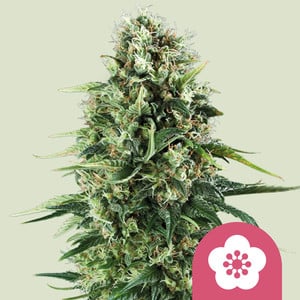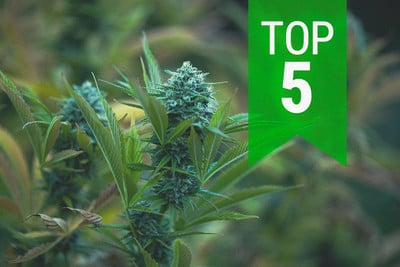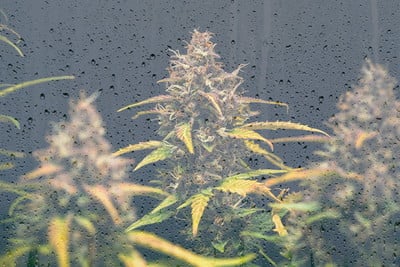.
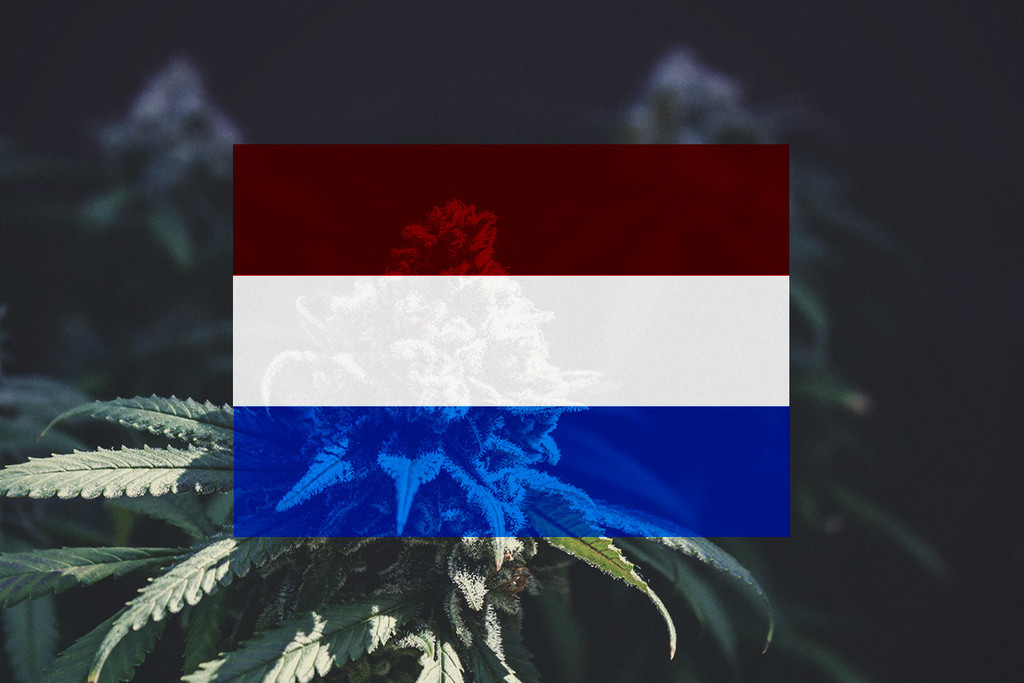
Growing Cannabis Outdoors In The Netherlands: Month-By-Month Guide
The Netherlands features relaxed cannabis laws for small growers and plenty of rain to keep plants growing well. Use the guide below to make sure your plants stay healthy and productive each month.
Growing cannabis outdoors in the Netherlands: A complete month-by-month guide.
Contents:
- Growing cannabis outdoors in the netherlands in 2025
- Is weed legal in the netherlands?
- A guide on growing cannabis outdoors in the netherlands
- Pros and cons of growing cannabis outdoors in the netherlands
- Top 3 rqs strains recommended for outdoor growing in the netherlands
- Growing weed in the netherlands: you can do it too!
Known for its world-famous coffeeshops, the Netherlands holds the title of one of the best cannabis hotspots in Europe. Some Dutch cannabis growers choose to cultivate indoors under the comfort of grow lights, but many cultivators see great success every year with outdoor harvests. Get to know the Dutch climate and maximise your outdoor returns using the guide below.
GROWING CANNABIS OUTDOORS IN THE NETHERLANDS IN 2025
Situated in the north-west of continental Europe, the Netherlands borders the North Sea. This body of water holds great influence over the environmental conditions in the country, making for a temperate maritime climate.
At close to 42,000km², the Netherlands is amongst the smaller countries in Europe, followed by a relatively long list of microstates such as Luxembourg and Liechtenstein. Because of its small landmass, the entire country experiences a relatively similar climate.
However, some slight variation in weather does occur. High winds impact coastal regions more than inland areas, and the south and south-east regions experience considerably less rain. Frost also impacts different regions at different times of the year, greatly altering the outdoor growing season in different places.
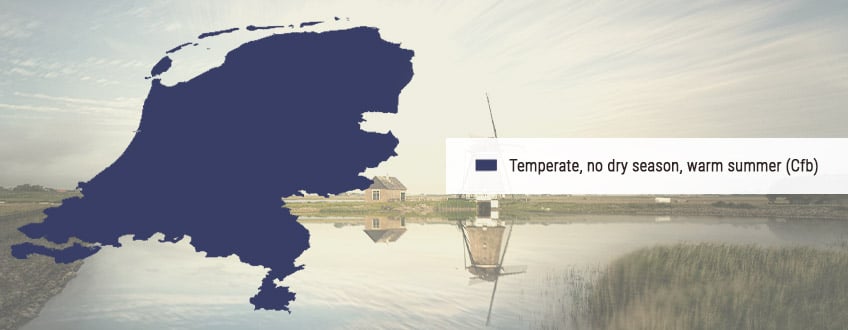
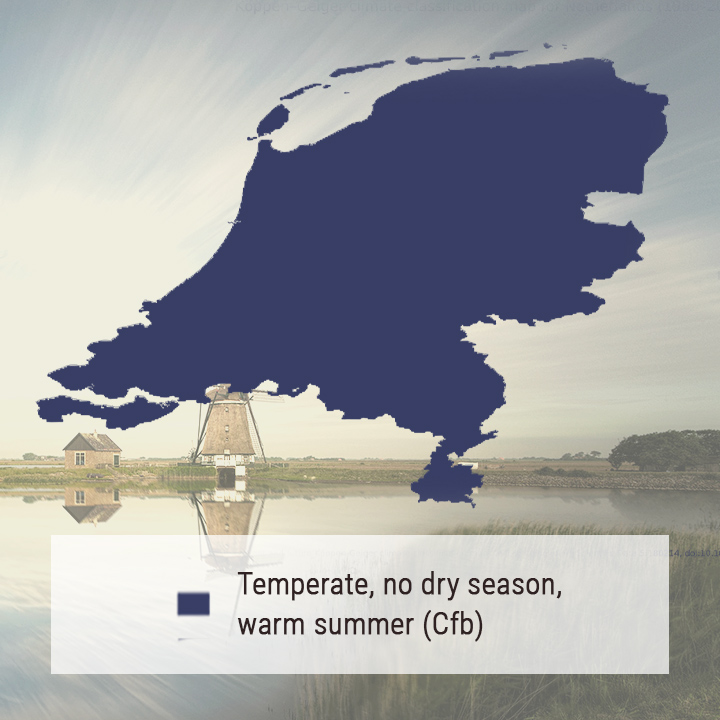
IS WEED LEGAL IN THE NETHERLANDS?
Weed-lovers from all over the Earth make the pilgrimage to smoke buds and gobble edibles in the coffeeshops that line the city streets. However, laws in the country occupy somewhat of a gray area.
The ability to stroll into a store and buy weed may give many visitors a false sense of tolerance. A strange paradox underpins this experience. Within the country, legislation outlaws growing cannabis, but allows the sale of the herb. Confusing, right?
Coffeeshops can only legally possess up to 17.6 oz at one time. Professional growers that supply coffeeshop chains are subject to fines, although rarely receive jail time. Laws are slightly more relaxed in regards to small-scale home growing. The authorities won’t charge growers with less than five plants. However, complex automated growing systems might raise concerns over commercial growing, despite a small number of plants.
The bottom line: Cannabis possession and small-scale growing are decriminalised in the Netherlands, but still illegal. Police will turn a blind eye to people possessing under 0.2 oz of the herb, and home growers often fly under the radar and are rarely prosecuted.
A GUIDE ON GROWING CANNABIS OUTDOORS IN THE NETHERLANDS
Every year, outdoor growers in the Netherlands load mason jars full of high-quality cannabis. Learn how to grow weed successfully month-by-month below.

MARCH
- Day length March 1st: 10h 56m
- AVG temperature: 2–10°C

March closes out winter across the Netherlands and ushers in some of the first signs of spring. Things are still quite chilly in all regions, and the risk of frost remains extremely high. Despite the cold, growers can get a head start on the season by kicking their operation off indoors.
First things first: germinate your seeds! Use simple techniques like the paper towel method or simply sow directly into small seedling pots. Alternatively, Easy Start provides an ideal environment for germinating seeds and includes beneficial bacteria to optimise the process. As your seedlings emerge from the soil, place them under grow lights or on a south-facing windowsill to get them off to a healthy start.
Decide whether you want to grow in garden beds or containers. If you opt for the former, you’ll need to dress your beds with a high-quality compost to feed your plants later down the line, and add some manure for good measure! Add a layer of straw or wood chip mulch to hold moisture in the bed and suppress weed growth.
APRIL
- Day length April 1st: 13h
- AVG temperature: 4–14°C

Although temperatures are beginning to edge in the right direction, the threat of frost remains very real. The coastal regions usually see the last frost before April 10th, so growers in these areas can happily start moving their plants into polytunnels and greenhouses around this time. Growers using containers can place their plants outside during the day, then move them back to safety before possible frost during the night.
Areas further inland—Eindhoven and Arnhem—experience the last frost around April 20th (fitting, huh?). To play it safe, keep your seedlings happy and snug under lights and on windowsills until early May in these regions. Start sowing hardy companion plants such as yarrow and peppermint. Once mature, these aromatic species will emanate pungent scents that will distract pests away from your cannabis crop. Remove any weeds that make it through the mulch layer in your beds.
MAY
- Day length May 1st: 14h 55m
- AVG temperature: 8–17°C

May brings the true face of spring! Warm temperatures and longer daylight hours cause many tree and plant species to erupt into bloom. The risk of frost disappears across the Netherlands, so start moving your plants outdoors!
If you’re growing in containers, transplant into suitably sized pots. The RQS Fabric Pot comes in 11l, 15l, 19l, and 25l sizes and provides adequate water retention and aeration. You’ll need to fill your pots with a high-quality soil mix along with supplementary nutrients like Easy Boost Organic Nutrition to get your seedlings off to a robust and healthy start.
If you’re cultivating cannabis in garden beds, make space in the mulch layer and dig a hole suitable for your plant. Add some mycorrhizal fungi to promote healthy root growth and ramp up nutrient absorption, and transplant your seedling. Return the mulch layer and give the plant a good watering.
Growers around Amsterdam, Rotterdam, The Hague, and Veluwe will experience high levels of rain throughout most of the season. Move potted plants under cover if the rain becomes too much, and set up tarps over your beds to prevent root rot.
Growers in the drier south—especially the south-east—should hand-water when the top few centimetres of soil are totally dry. If you're growing a high volume of plants, set up a drip irrigation system to spare yourself a mammoth chore.

JUNE
- Day length June 1st: 16h 24m
- AVG temperature: 11–20°C

As the last month of spring, June brings comfortable temperatures and plenty of sunlight. Your plants will be well into the vegetative stage at this point, putting all of their energy into developing fan leaves and photosynthesising for the flowering stage ahead.
Your plants will start putting on size both vertically and horizontally. Growers near the coast will need to safeguard their crops against the possibility of harsh winds. Regions such as the Hook of Holland, IJmuiden, and Vlissingen see over 100 days of wind per year at speeds of around 24kph. If you live in a vulnerable region, stake your plants to provide structural support.
Your increasingly mature plants will be ready to handle some training at this point. Use low-stress training to direct energy away from a single central cola into many productive bud sites. These methods will help distribute energy across the canopy and provide discrete plants and enhanced yields.
Your plants will also be ready for more nutrients at this stage. Mix up a batch of Easy Grow Booster Tablets to feed your plants with everything they need during veg every time you water them. Add a healthy dose of compost tea every now and then to introduce beneficial bacteria and fungi into your soil. This will boost the biodiversity of your soil and ultimately improve plant health.
Sow warmth-loving companion plants during this time, such as chamomile and basil, to further bolster your defenses against insect pest species. If you find you’re dealing with a particularly bad infestation, recruit the help of biological controls such as beneficial predatory insects to balance things out.
JULY
• Day length July 1st: 16h 37m
• AVG temperature: 13–22°C
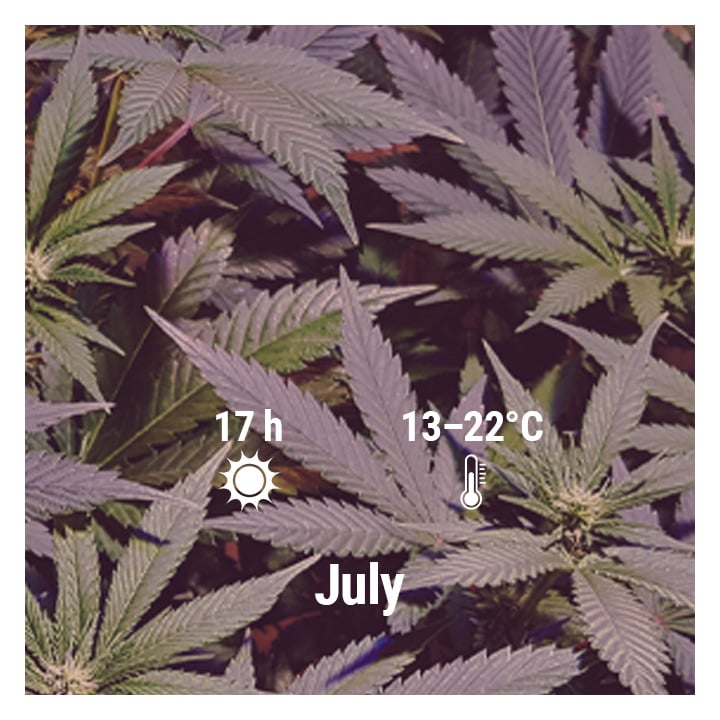
Can you feel the heat while tanning out in the garden? So can your plants! Keep on top of watering in the mornings and evenings to prevent the soil from drying out.
Continue training your plants, making sure the canopy and all future bud sites remain even and open to sunlight. Open the doors and windows in your greenhouse or polytunnel during the day to vent them out and promote fresh air exchange.
Add fresh worm castings and compost to your beds to provide slow-release nutrients, and a fresh new layer of mulch to combat the ever-emerging weeds. Continue feeding your plants with organic nutrient formulas to promote vigorous growth.
Make some of your companion plants into a refreshing tea and take a stroll around the garden. Look out for curling leaves and discoloration. If you spot these symptoms, learn how to fix them here.
With flowering just around the corner, you’ll now be able to sex your plants. Check the nodes of each plant—the points where the branches and main stem join—for signs of pre-flowers. Female pre-flowers can be identified by the presence of small hairs, whereas males have no hairs and emerge as smooth sacs. Remove any males from the garden immediately as you don’t want them pollinating your females.
AUGUST
• Day length August 1st: 15h 26m
• AVG temperature: 13–22°C

Have you noticed the days getting slightly shorter? Your plants have, too! This signal causes photoperiod plants to start flowering, with the intention to reproduce before the cold weather returns.
Flowering plants possess different nutritional demands compared to their former vegetating selves. Switch to watering your plants with Easy Bloom to provide less nitrogen and higher levels of calcium, magnesium, and potassium. Dress your garden beds with a layer of bone meal, kelp meal, and worm castings.
Start defoliating your plants to expose emerging flowers to more light and improve airflow in the canopy. Keep up a consistent watering routine, especially in the south-east where rainfall might be scarce during this month.

SEPTEMBER
• Day length September 1st: 13h 34m
• AVG temperature: 10–19°C

Your flowers will start forming increasing amounts of trichomes. Your garden will begin to smell, but your handy companion plants will hide the odour from suspicious neighbors and hungry insects.
You’ll need to make an effort to protect your buds against mold and fungal diseases. High levels of moisture throughout the country—around 83% humidity during September—will predispose your flowers to infection. High levels of rain in the north don’t help, either.
Move your potted plants into the greenhouse or polytunnel if you expect long spells of rain. Place tarps over your garden beds if the deluge doesn’t stop. Learn how to identify and treat mold here. Keep up with defoliation efforts to help prevent mold, too.
Fast-flowering varieties will be ready to harvest at the end of September. Restrict all nutrients up to two weeks before harvest to flush the growing medium. Cut these smaller plants at the base and hang them up to dry. Cure them in mason jars and enjoy an early harvest!
OCTOBER
• Day length October 1st: 11h 35m
• AVG temperature: 7–15°C

Say hello to fall. As temperatures begin to drop and the nights grow longer, indica strains will be ready to harvest around mid-October. Flush the growing medium two weeks prior to your selected harvest date. Dry and cure your bounty and enjoy the soothing and stoning effects of indica genetics.
Longer-flowering sativa varieties will still be maturing at the end of the month. However, the first frost will arrive in the east of the country and some central regions around mid-October. Areas such as Eindhoven, Amersfoort, Enschede, and Almelo can expect the first frost between October 21–31st. Move plants into greenhouses and polytunnels, and wrap pots in bubble wrap if things get extra cold.
NOVEMBER
• Day length November 1st: 9h 36m
• AVG temperature: 4–10°C

The final months of the growing season. Western regions such as Amsterdam, Rotterdam, and Drachten will experience the first frost between November 1st–10th. Ideally, all of your plants will be in a greenhouse at this point. Plants that remain in beds will be a bit of a gamble.
Flush two weeks before harvest, then cut your plants and trim your flowers. Dry and cure your harvest and enjoy the more cerebral effects of your sativa varieties.
With the growing season over, clean out your greenhouses and polytunnels in preparation for next year.
PROS AND CONS OF GROWING CANNABIS OUTDOORS IN THE NETHERLANDS
Growing cannabis outdoors in the Netherlands provides cultivators with consistent, high-quality flowers year after year. Doing so comes with some great advantages, but there are some hurdles to contend with too.
Pros:
• Relaxed decriminalisation laws
• A relatively late frost in the west of the country
• Plenty of rain saves money on water
Cons:
• Harsh winds in coastal regions
• High humidity all over the country
• Potential lack of rain in the south-east
TOP 3 RQS STRAINS RECOMMENDED FOR OUTDOOR GROWING IN THE NETHERLANDS
As one of the most storied plants on Earth, cannabis can survive just about anywhere. However, some strains thrive where others don’t. Check out the three best strains to grow in the Netherlands below.
• Power Flower — Mold is no match for her
Breeders created Power Flower to deal with high humidity. The sativa-dominant lady descends from a hardy South African landrace and delivers an uplifting and stimulating high. Her tall and elegant flowers produce a moreish terpene profile that features hints of citrus, fruit, and pine. Outdoor plants reach a height of 78 inches and yield around 17.6 – 19.4 oz. Expect to harvest during October.
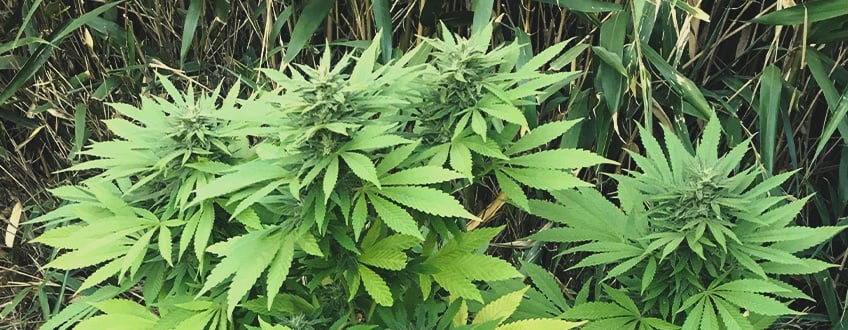
Power Flower
|
|
South African Sativas |
|
|
18 to 19 oz/m² |
|
|
3 to 4 feet |
|
|
9 - 10 weeks |
|
|
THC: 19% |
|
|
Sativa 88% Indica 12% |
|
|
18 to 19 oz/plant |
|
|
5 to 7 feet |
|
|
October |
|
|
Heavy |
• Somango XL — Hardy and productive
Perfect for the early frosts of the eastern regions, Somango XL offers a speedy and rewarding yield. This indica-dominant strain features a THC level of 18% alongside pleasant fruity terpenes. Enjoy her soothing effect on long summer afternoons and relaxing evenings. She’ll top out at a height of 78 inches and provide 19.4 – 21.2 oz. Prepare to harvest her colas after a flowering time of 8–10 weeks.

Somango XL
|
|
Somango x Critical 47 |
|
|
18 to 20 oz/m² |
|
|
2 to 3 feet |
|
|
8 - 10 weeks |
|
|
THC: 18% |
|
|
Sativa 25% Indica 75% |
|
|
19 to 21 oz/plant |
|
|
4 to 7 feet |
|
|
Late September |
|
|
Powerful , Stoned |
• Royal Gorilla Automatic — Great for guerrilla grows
Not every grower enjoys the luxury of a garden. Royal Gorilla Automatic will provide a respectable yield even when cultivated as part of a guerrilla grow. This powerful and fast-growing strain will thrive in a concealed forest opening or meadow, considering you give her basic love and care. Her high-THC buds will be ready for your enjoyment a mere 8–10 weeks after germination. Expect a good yield of 4.2 – 6 oz.
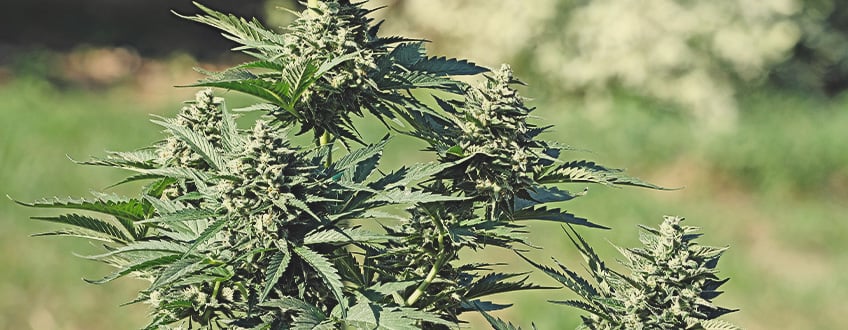
Royal Gorilla Auto
|
|
Gorilla x Cookies x Ruderalis |
|
|
11 to 14 oz/m² |
|
|
2 to 3 feet |
|
|
6 - 8 weeks |
|
|
THC: 20% |
|
|
Sativa 30% Indica 50% Ruderalis 20% |
|
|
4 to 6 oz/plant |
|
|
3 to 5 feet |
|
|
10 - 12 weeks after sprouting |
|
|
Heavy, Physically Relaxing, Stoned |
GROWING WEED IN THE NETHERLANDS: YOU CAN DO IT TOO!
Overall, the Netherlands offers an easy growing season to outdoor cultivators. Consistent rainfall keeps plants hydrated, and the length of the season allows growers to raise large sativa plants if they have a greenhouse or polytunnel installed. As long as you're prepared to defend your flowers against excess moisture, it should be plain sailing! Relaxed laws for small grows are also a bonus!


























